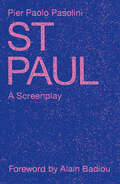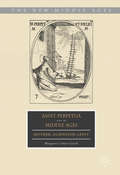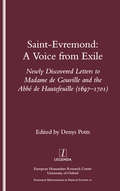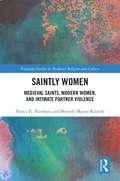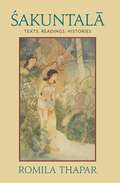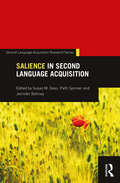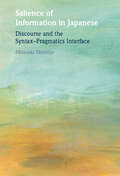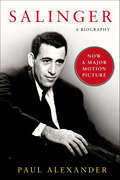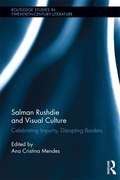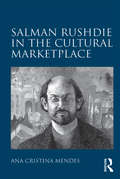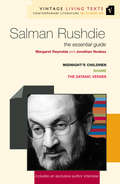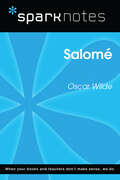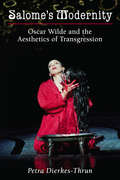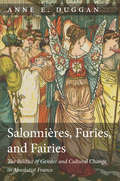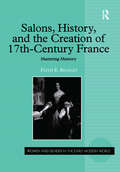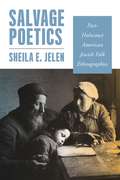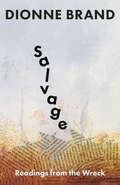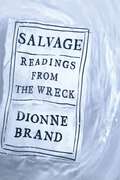- Table View
- List View
Saint Paul
by Pier Paolo PasoliniPresented here for the first time in English is a remarkable screenplay about the apostle Paul by Pier Paolo Pasolini, legendary filmmaker, novelist, poet, and radical intellectual activist. Written between the appearance of his renowned film Teorema and the shocking, controversial Salò, or the 120 Days of Sodom, St Paul was deemed too risky for investors. At once a political intervention and cinematic breakthrough, the script forces a revolutionary transformation on the contemporary legacy of Paul. In Pasolini's kaleidoscope, we encounter fascistic movements, resistance fighters, and faltering revolutions, each of which reflects on aspects of the Pauline teachings. From Jerusalem to Wall Street and Greenwich Village, from the rise of SS troops to the death of Martin Luther King, Jr, here--as Alain Badiou writes in the foreword--'Paul's text crosses all these circumstances intact, as if it had foreseen them all'. This is a key addition to the growing debate around St Paul and to the proliferation of literature centred on the current turn to religion in philosophy and critical theory, which embraces contemporary figures such as Alain Badiou, Slavoj i ek and Giorgio Agamben.From the Hardcover edition.
Saint Perpetua across the Middle Ages: Mother, Gladiator, Saint (The New Middle Ages)
by Margaret Cotter-LynchThis study traces the genealogy of Saint Perpetua’s story with a straightforward yet previously overlooked question at its center: How was Perpetua remembered and to what uses was that memory put? One of the most popular and venerated saints from 200 CE to the thirteenth century, the story of Saint Perpetua was retold in dramatically different forms across the European Middle Ages. Her story begins in the arena at Carthage: a 22-year-old nursing mother named Vibia Perpetua was executed for being a Christian, leaving behind a self-authored account of her time in prison leading up to her martyrdom. By turns loving mother, militant gladiator, empathic young woman, or unattainable ideal, Saint Perpetua’s story ultimately helps to trace the circulation of texts and the transformations of ideals of Christian womanhood between the third and thirteenth centuries.
Saint-Evremond: A Voice from Exile - Unpublished Letters to Madame De Gouville and the Abbe De Hautefeuille 1697-1701
by Denys Potts"The celebrated French critic and thinker Charles de Saint-Evremond (1614-1703) spent much of his life in exile in London, where he wrote most of his major works. The letters in the present collection, long thought to have been lost, were rescued from obscurity by Denys Potts, and are published here for the first time. Written to Madame de Gouville, whose friendship he happily rediscovered in his declining years, and to the Abbe de Hautefeuille, secretary to the Duchesse de Bouillon, the two series of interwoven letters form a single narrative which, for sheer spontaneity and verve, is matched only by the letters of Madame de Sevigne. This edition represents the largest single discovery of Saint-Evremond letters, and includes many that were previously inaccessible in private collections."
Saintly Women: Medieval Saints, Modern Women, and Intimate Partner Violence (Routledge Studies in Medieval Religion and Culture)
by Beverly Mayne Kienzle Nancy NienhuisThis ground-breaking volume assesses the contemporary epidemic of intimate partner violence and explores how and why cultural and religious beliefs serve to excuse battering and to work against survivors’ attempts to find safety. Theological interpretations of sacred texts have been used for centuries to justify or minimize violence against women. The authors recover historical and especially medieval narratives whose protagonists endure violence that is framed by religious texts or arguments. The medieval theological themes that redeem battering in saints’ lives—suffering, obedience, ownership and power—continue today in most religious traditions. This insightful book emphasizes Christian history and theology, but the authors signal contributions from interfaith studies to efforts against partner violence. Examining medieval attitudes and themes sharpens the readers’ understanding of contemporary violence against women. Analyzing both historical and contemporary narratives from a religious perspective grounds the unique approach of Nienhuis and Kienzle, one that forges a new path in grappling with partner violence. Medieval and contemporary narratives alike demonstrate that women in abusive relationships feel the burden of religious beliefs that enjoin wives to endure suffering and to maintain stable marriages. Religious leaders have reminded women of wives’ responsibility for obedience to husbands, even in the face of abuse. In some narratives, however, women create safe places for themselves. Moreover, some exemplary communities call upon religious belief to support their opposition to violence. Such models of historical resistance reveal precedents for response through intervention or protection.
Saints and Symposiasts
by Jason KönigGreek traditions of writing about food and the symposium had a long and rich afterlife in the first to fifth centuries CE, in both Greco-Roman and early Christian culture. This book provides an account of the history of the table-talk tradition, derived from Plato's Symposium and other classical texts, focusing among other writers on Plutarch, Athenaeus, Methodius and Macrobius. It also deals with the representation of transgressive, degraded, eccentric types of eating and drinking in Greco-Roman and early Christian prose narrative texts, focusing especially on the Letters of Alciphron, the Greek and Roman novels, especially Apuleius, the Apocryphal Acts of the Apostles and the early saints' lives. It argues that writing about consumption and conversation continued to matter: these works communicated distinctive ideas about how to talk and how to think, distinctive models of the relationship between past and present, distinctive and often destabilising visions of identity and holiness.
Sakuntala: Texts, Readings, Histories (Anthem South Asian Studies)
by Romila ThaparThe figure of Sakuntala appears in many forms throughout South Asian literature, most famously in the Mahabharata and in Kalidisa's fourth-century Sanskrit play, Sakuntala and the Ring of Recollection. In these two texts, Sakuntala undergoes a critical transformation, relinquishing her assertiveness and autonomy to become the quintessentially submissive woman, revealing much about the performance of Hindu femininity that would come to dominate South Asian culture. Through a careful analysis of sections from Sakuntala and their various iterations in different contexts, Romila Thapar explores the interactions between literature and history, culture and gender, that frame the development of this canonical figure, as well as a distinct conception of female identity.
Salem Is My Dwelling Place: A Life of Nathaniel Hawthorne
by Edwin Haviland MillerFrom the Preface: "hortly after the death of Nathaniel Hawthorne's father in 1808 the son composed tales which always concluded, "I'm never coming home again." The inevitable truth, however, was that despite Thomas Wolfe's claim that "you can't go home again" and Hawthorne's understandable ambivalence to Salem, he never left his dwelling place except physically, even though he returned there only rarely after incurring the wrath of the townspeople whom he savaged in the prologue to The Scarlet Letter." This well written, fully researched biography of a brilliant author is an excellent read. It details Hawthorne's life, (including his early years,) in a way that not only gives insight into Hawthorne's character, but into his writing as well.
Salience in Second Language Acquisition (Second Language Acquisition Research Series)
by Susan M. Gass Patti Spinner Jennifer BehneySalience in Second Language Acquisition brings together contributions from top scholars of second language acquisition (SLA) in a comprehensive volume of the existing literature and current research on salience. In the first book to focus exclusively on this integral topic, the editors and contributors define and explore what makes a linguistic feature salient in sections on theory, perpetual salience, and constructed salience. They also provide a history of SLA theory and discussion on its contemporary use in research. An approachable introduction to the topic, this book is an ideal supplement to courses in SLA, and a valuable resource for researchers and scholars looking for a better understanding of the subject.
Salience of Information in Japanese: Discourse and the Syntax–Pragmatics Interface
by Mitsuaki Shimojo'Salience' is a linguistic phenomenon whereby information that is 'given', or 'new', is distributed and presented within a sentence in particular ways that convey its relevance. Although it has been widely described as the speaker's linguistic choices based on the hearer's perspective, it has received less attention as the speaker's manipulations of the hearer's cognitive states. This timely study redresses that balance by analysing several morphosyntactic phenomena in Japanese, drawing on a wide range of authentic language examples. Taking a functionalist perspective, it brings together studies of grammar and discourse, which are often described separately, and deploys the combined grammar-discourse approach in Role and Reference Grammar, the structural-functionalist theory in which syntax, semantics, and pragmatics are equally central to our understanding of language. It also offers an analysis of second language (L2) learners' Japanese discourse, and demonstrates the relevance of that analysis to issues outside of traditional second language research.
Salinger: A Biography
by Paul AlexanderJ.D. Salinger was one of the twentieth century's greatest writers. He was also one of its most elusive. After making his mark on the American literary scene, Salinger retreated to a small town in New Hampshire where he hoped to hide his life away from the world. With dogged determination, however, journalist and biographer Paul Alexander captured Salinger's story in this, the only complete biography of Holden Caulfield's creator published to date. Using the archives at Princeton, Yale, Harvard, Columbia, NYU and the New York Public Library as well as research in New York and New Hampshire, Alexander has created a great biography of Salinger that's further enriched by interviews with some of the greatest literary figures of our time: George Plimpton, Gay Talese, Ian Hamilton, Harold Bloom, Roger Angell, A. Scott Berg, Robert Giroux, Ved Mehta, Gordon Lish and Tom Wolfe.
Sallies, Romps, Portraits, and Send-Offs: Selected Prose, 2000-2016
by August KleinzahlerSixteen years’ worth of incisive essays by the great poet and memoirist“Witty, gritty poet and memoirist Kleinzahler” (Publishers Weekly) has gathered the best of sixteen years’ worth of essays, remembrances, and reviews in this scabrous and essential collection, setting down his thoughts about great poets and bad poets, about kvetching fiction writers and homicidal musicians, about eccentric critics and discerning nobodies, always with insight and humor, and never suffering fools gladly.Here, in Sallies, Romps, Portraits, and Send-Offs, August Kleinzahler eulogizes famous friends, warts and all (Thom Gunn, Christopher Middleton, Leonard Michaels); leads the charge in carving up a few bloated reputations (E. E. Cummings, Richard Brautigan); and sings the praises of unjustly neglected masters (Lucia Berlin, Kenneth Cox). He also turns the spotlight on himself in several short, delightful memoirs, covering such subjects as his obsessive CD collecting, the eerie effects of San Francisco fog, and the terrible duty of selling of his childhood home.
Sally's Summer with Her Grandparents
by Mark Weber J. Matteson ClausThe final installment of the Reading Street curriculum series, Reading Street: Grade 6, comes complete with everything you'll need to create English and Language Arts lessons for your child. This system includes reading selections designed to help your child hone his or her skills, a Teacher Resource DVD to make your task of developing lessons easier, and a packet of curriculum materials. Reading Street: Grade 6 is a comprehensive system designed to enhance your child's skills in reading, writing and language. Each assignment in Reading Street helps your child progress toward that goal. While such a dynamic curriculum might sound challenging for you as a parent and educator to use, you can rest assured that the materials will guide you through 12 weeks of English and Language Arts lesson planning with ease. If you prefer a structured homeschooling program format, Reading Street (in all of its Grade level structures) is the right fit for you and your child. Grade 6 comes with two volumes of six units. By the time you complete Grade 6, your child will be able to: Read through a variety of complex literature, including biographies and fictional stories. Discover additional reading material based on personal taste. Relate individual chapters or concepts to the book as a whole. Write complete stories using proper grammar, punctuation and word choice. Compose a written argument using appropriate sources. Examine and edit his or her own writing, as well as the writing of others. Present an oral presentation based on the lessons. Unlike other curricula, Reading Street imparts a love of reading upon your child. From Grade 1 through Grade 6, your child will learn not only the skills he or she needs to advance his or her education, but become a lifelong student and reader. For more information about the specific materials included in the Reading Street: Grade 6 curriculum for homeschooling, visit the Features and Benefits page.
Salman Rushdie and Visual Culture: Celebrating Impurity, Disrupting Borders (Routledge Studies in Twentieth-Century Literature)
by Ana Cristina MendesIn Salman Rushdie’s novels, images are invested with the power to manipulate the plotline, to stipulate actions from the characters, to have sway over them, seduce them, or even lead them astray. Salman Rushdie and Visual Culture sheds light on this largely unremarked – even if central – dimension of the work of a major contemporary writer. This collection brings together, for the first time and into a coherent whole, research on the extensive interplay between the visible and the readable in Rushdie’s fiction, from one of the earliest novels – Midnight’s Children (1981) – to his latest – The Enchantress of Florence (2008).
Salman Rushdie in the Cultural Marketplace
by Ana Cristina MendesTaking up the roles that Salman Rushdie himself has assumed as a cultural broker, gatekeeper, and mediator in various spheres of public production, Ana Cristina Mendes situates his work in terms of the contemporary production, circulation, and consumption of postcolonial texts within the workings of the cultural industries. Mendes pays particular attention to Rushdie as a public performer across various creative platforms, not only as a novelist and short story writer, but also as a public intellectual, reviewer, and film critic. Mendes argues that how a postcolonial author becomes personally and professionally enmeshed in the dealings of the cultural industries is of particular relevance at a time when the market is strictly regulated by a few multinational corporations. She contends that marginality should not be construed exclusively as a basis for understanding Rushdie’s work, since a critical grounding in marginality will predictably involve a reproduction of the traditional postcolonial binaries of oppressor/oppressed and colonizer/colonized that the writer subverts. Rather, she seeks to expand existing interpretations of Rushdie’s work, itineraries, and frameworks in order to take into account the actual conditions of postcolonial cultural production and circulation within a marketplace that is global in both orientation and effects.
Salman Rushdie: The Essential Guide (Vintage Living Texts #11)
by Margaret Reynolds Jonathan NoakesIn Vintage Living Texts, teachers and students will find the essential guide to the works of Salman Rushdie. Vintage Living Texts is unique in that it offers an in-depth interview with Salman Rushdie, relating specifically to the texts under discussion. This guide deals with Rushdie's themes, genre and narrative technique,and a close reading of the texts will provide a rich source of ideas for intelligent and inventive ways of approaching the novels.Also included in this guide are detailed reading plans for all three novels, questions for essay and discussion, contextual material, suggested texts for complementary and comparative reading, extracts from reviews, a biography, a bibliography and a glossary of literary terms.Texts covered: Midnight's Children, Shame and The Satanic Verses.Whether a teacher, student or general reader, the Vintage Living Texts series gives you the chance to explore new resources and enjoy new pleasures.
Salome (SparkNotes Literature Guide Series)
by SparkNotesSalome (SparkNotes Literature Guide) by Oscar Wilde Making the reading experience fun! Created by Harvard students for students everywhere, SparkNotes is a new breed of study guide: smarter, better, faster. Geared to what today's students need to know, SparkNotes provides: *Chapter-by-chapter analysis *Explanations of key themes, motifs, and symbols *A review quiz and essay topicsLively and accessible, these guides are perfect for late-night studying and writing papers
Salome's Modernity: Oscar Wilde and the Aesthetics of Transgression
by Petra Dierkes-Thrun"Salome's Modernityis a first-class piece of scholarship---at once learned, sharply focused, and beautifully, indeed, entertainingly written. Above all, it is a significant contribution to modernist studies, for it takes a number of themes that appear in the various writings about Salome to show precisely how the various authors, performers and film-makers utilized and rethought these themes for their own times. " ---Herbert S. Lindenberger, Stanford University "Salome's Modernityis intellectually powerful, truly informative, and engagingly written. No other book rivals it in scope when it comes to placing Wilde's play in a cultural and literary genealogy that links memorable works of poetry, fiction, drama, opera, and film. " ---Joseph Bristow, UCLA Oscar Wilde's 1891 symbolist tragedy Salomé has had a rich afterlife in literature, opera, dance, film, and popular culture. Salome's Modernity: Oscar Wilde and the Aesthetics of Transgressionis the first comprehensive scholarly exploration of that extraordinary resonance that persists to the present. Petra Dierkes-Thrun positions Wilde as a founding figure of modernism and Salomé as a key text in modern culture's preoccupation with erotic and aesthetic transgression, arguing that Wilde's Salomé marks a major turning point from a dominant traditional cultural, moral, and religious outlook to a utopian aesthetic of erotic and artistic transgression. Wilde and Salomé are seen to represent a bridge linking the philosophical and artistic projects of writers such as Mallarmé, Pater, and Nietzsche to modernist and postmodernist literature and philosophy and our contemporary culture. Dierkes-Thrun addresses subsequent representations of Salome in a wide range of artistic productions of both high and popular culture through the works of Richard Strauss, Maud Allan, Alla Nazimova, Ken Russell, Suri Krishnamma, Robert Altman, Tom Robbins, and Nick Cave, among others. Jacket illustration: Maria Ewing in Richard Strauss's Salome, Pittsburgh Opera, 2001, © Suellen Fitzsimmons.
Salonnières, Furies, and Fairies: The Politics of Gender and Cultural Change in Absolutist France
by Anne E. DugganThe original edition of Salonnières, Furies, and Fairies, published in 2005, was a pathbreaking work of early modern literary history, exploring women’s role in the rise of the fairy tale and their use of this new genre to carve out roles as major contributors to the literature of their time. This new edition, with a new introduction and a forward by acclaimed scholar Allison Stedman, emphasizes the scholarly legacy of Anne Duggan’s original work, and its continuing field-changing implications. The book studies the works of two of the most prolific seventeenth-century women writers, Madeleine de Scudéry and Marie-Catherine d'Aulnoy. Analyzing their use of the novel, the chronicle, and the fairy tale, Duggan examines how Scudéry and d'Aulnoy responded to and participated in the changes of their society, but from different generational and ideological positions. This study also takes into account the history of the salon, an unofficial institution that served as a locus for elite women's participation in the cultural and literary production of their society. In order to highlight the debates that emerged with the increased participation of aristocratic women within the public sphere, the book also explores the responses of two academicians, Nicolas Boileau and Charles Perrault.
Salons, History, and the Creation of Seventeenth-Century France: Mastering Memory (Women and Gender in the Early Modern World)
by Faith E. BeasleyThe first half of the book is a detailed study of how the salons influenced the development of literature. Beasley argues that many women were not only writers, they also served as critics for the literary sphere as a whole. In the second half of the book Beasley examines how historians and literary critics subsequently portrayed the seventeenth century literary realm, which became identified with the great reign of Louis XIV and designated the official canon of French literature. Beasley argues that in a rewriting of this past, the salons were reconfigured in order to advance an alternative view of this premier moment of French culture and of the literary masterpieces that developed out of it. Through her analysis of how the seventeenth century salon has been defined and transmitted to posterity, Beasley illuminates facets of France's collective memory, and the powers that constituted it in the past and that are still working to define it today.
Salsa, Language and Transnationalism
by Britta SchneiderThis unique contribution to the field of sociolinguistics scrutinises language ideologies in a globalised world. Using ethnographic methodology and a deconstructive approach to language it examines German and Australian Communities of Practice constituted by Salsa dance, and asks what languages symbolise in transnational, non-ethnic cultures.
Salvage Poetics: Post-Holocaust American Jewish Folk Ethnographies (Raphael Patai Series in Jewish Folklore and Anthropology)
by Sheila E. JelenSalvage Poetics: Post-Holocaust American Jewish Folk Ethnographies explores how American Jewish post-Holocaust writers, scholars, and editors adapted pre-Holocaust works, such as Yiddish fiction and documentary photography, for popular consumption by American Jews in the post-Holocaust decades. These texts, Jelen argues, served to help clarify the role of East European Jewish identity in the construction of a post-Holocaust American one. In her analysis of a variety of "hybrid" texts—those that exist on the border between ethnography and art—Jelen traces the gradual shift from verbal to visual Jewish literacy among Jewish Americans after the Holocaust. S. Ansky’s ethnographic expedition (1912–1914) and Martin Buber’s adaptation and compilation of Hasidic tales (1906–1935) are presented as a means of contextualizing the role of an ethnographic consciousness in modern Jewish experience and the way in which literary adaptations and mediations create opportunities for the creation of folk ethnographic hybrid texts. Salvage Poetics looks at classical texts of the American Jewish experience in the second half of the twentieth century, such as Maurice Samuel’s The World of Sholem Aleichem (1944), Abraham Joshua Heschel’s The Earth Is the Lord’s (1950), Elizabeth Herzog and Mark Zborowski’s Life Is with People (1952), Lucy Dawidowicz’s The Golden Tradition (1967), and Roman Vishniac’s A Vanished World (1983), alongside other texts that consider the symbiotic relationship between pre-Holocaust aesthetic artifacts and their postwar reframings and reconsiderations. Salvage Poetics is particularly attentive to how literary scholars deploy the notion of "ethnography" in their readings of literature in languages and/or cultures that are considered "dead" or "dying" and how their definition of an "ethnographic" literary text speaks to and enhance the scientific discipline of ethnography. This book makes a fresh contribution to the fields of American Jewish cultural and literary studies and art history.
Salvage Work: U.S. and Caribbean Literatures amid the Debris of Legal Personhood
by Angela NaimouSalvage Work examines contemporary literary responses to the law’s construction of personhood in the Americas. Tracking the extraordinary afterlives of the legal slave personality from the nineteenth century into the twenty-first, Angela Naimou shows the legal slave to be a fractured but generative figure for contemporary legal personhood across categories of race, citizenship, gender, and labor. What emerges is a compelling and original study of how law invents categories of identification and how literature contends with the person as a legal fiction. Through readings of Francisco Goldman’s The Ordinary Seaman, Edwidge Danticat’s Krik?Krak!, Rosario Ferre’s Sweet Diamond Dust (Maldito Amor), Gayl Jones’s Song for Anninho and Mosquito, and John Edgar Wideman’s Fanon, Naimou shows how literary engagements with legal personhood reconfigure formal narrative conventions in Black Atlantic historiography, the immigrant novel, the anticolonial romance, the trope of the talking book, and the bildungsroman.Revealing links between colonial, civic, slave, labor, immigration, and penal law, Salvage Work reframes debates over civil and human rights by revealing the shared hemispheric histories and effects of legal personhood across seemingly disparate identities—including the human and the corporate person, the political refugee and the economic migrant, and the stateless person and the citizen.In depicting the material remains of the legal slave personality in the de-industrialized neoliberal era, these literary texts develop a salvage aesthetic that invites us to rethink our political and aesthetic imagination of personhood. Questioning liberal frameworks for civil and human rights as well as what Naimou calls death-bound theories of personhood—in which forms of human life are primarily described as wasted, disposable, bare, or dead in law—Salvage Work thus responds to critical discussions of biopolitics and neoliberal globalization by exploring the potential for contemporary literature to reclaim the individual from the legal regimes that have marked her.
Salvage: Readings from the Wreck
by Dionne BrandIn her first full-length non-fiction since the influential A Map to the Door of No Return, Dionne Brand explores 17th, 18th and 19th-century English and American literature—and the colonial aesthetic that shaped her sense of self and world, of what was possible and what was not."Coloniality constructs outsides and insides—worlds to be chosen, disturbed, interpreted, and navigated—in order to live something like a real self."In Salvage, internationally acclaimed poet and novelist Dionne Brand offers a bracing account of reading, life and what remains in the wreck of empire. Uniquely and powerfully blending criticism and autobiography-as-artifact, Brand explores her encounters with colonial, imperialist and racist tropes in famous and familiar books, looking particularly at the extraordinary implications and modern-day reverberations of stories such as Defoe's Robinson Crusoe and Austen's Mansfield Park; the ways that the practices of reading and writing are shaped by those narrative structures; and the challenges of writing a narrative of Black life that attends to its own consciousness and expression. Making and remaking the self in relation to these dominant cultural narratives, Brand learned to read the literature of two empires, the British and the American, in an anti-colonial light—in order to survive, in order to live.The scene is the act of reading; the book, another kind of forensics—a forensics of the literary substance of which the author is made and from which she must recover. Or, if not recover, then piece together as artifact. Much more than autobiography, and much more than a work of literary criticism, Salvage is gripping, witty, revelatory and essential reading by one of our most powerful and brilliant writers.
Salvage: Readings from the Wreck
by Dionne BrandOne of Literary Hub's most anticipated books of 2024Dionne Brand explores English and American literature, and the colonial aesthetic that shaped her sense of self and the world, of what was possible and what was not.In Salvage: Readings from the Wreck, Dionne Brand’s first major book of nonfiction since her classic A Map to the Door of No Return, the acclaimed poet and novelist offers a bracing look at the intersections of reading and life, and what remains in the wreck of empire. Blending literary criticism and autobiography-as-artifact, Brand reads Aphra Behn’s Oroonoko, Daniel Defoe’s Robinson Crusoe, and Jane Austen’s Mansfield Park, among other still widely studied works, to explore encounters with colonial, imperialist, and racist tropes from the seventeenth to the nineteenth centuries—tropes that continue in new forms today. Brand vividly shows how contemporary practices of reading and writing are shaped by the narrative structures of these and related works, and explores how, in the face of this, one writes a narrative of Black life that attends to its own consciousness and expression.With the power and eloquence of a great poet coupled with the rigor of a deep and subtle thinker, Brand reveals how she learned to read the literature of two empires, British and American, in an anticolonial light—in order to survive, and in order to live.This is the library, the wreck, and the potential for salvage she offers us now, in a brilliant, groundbreaking, and essential work.
